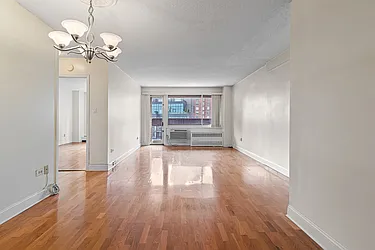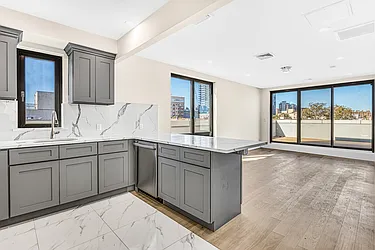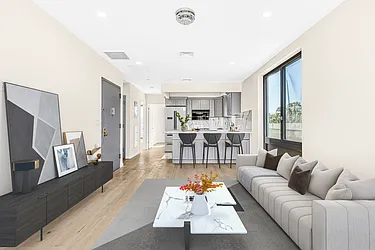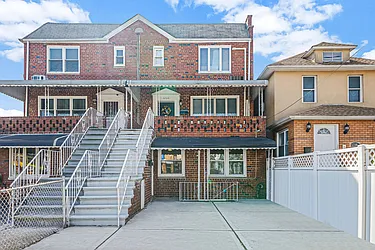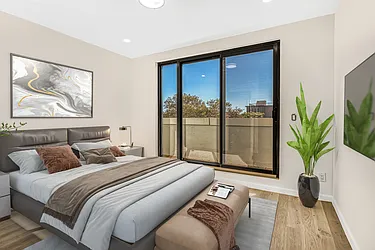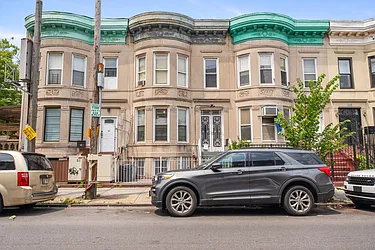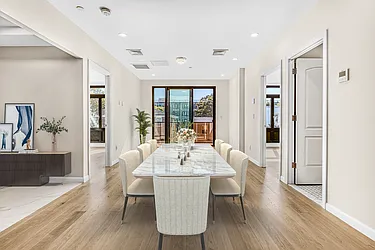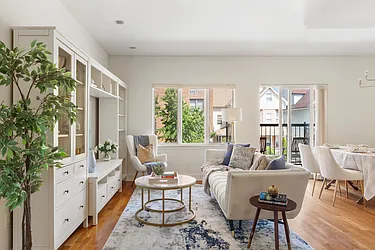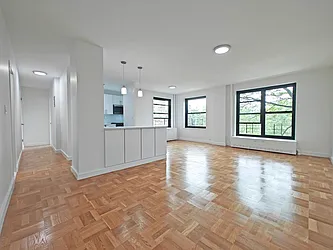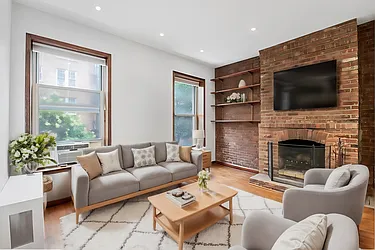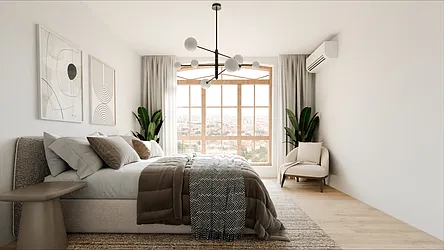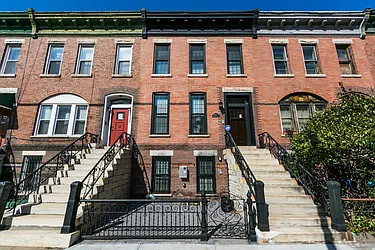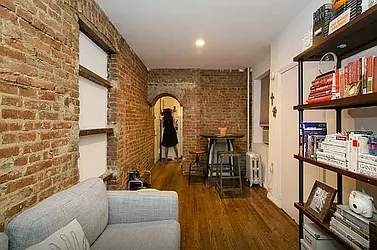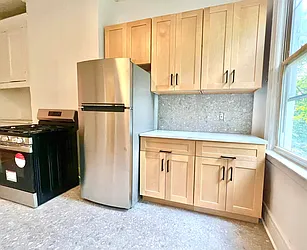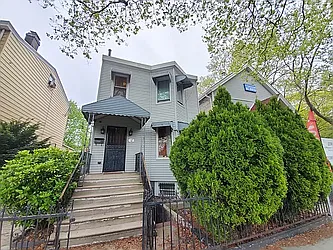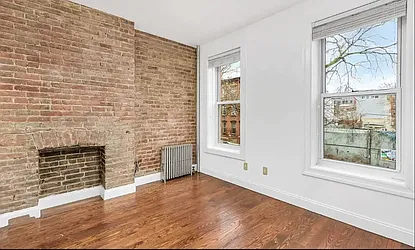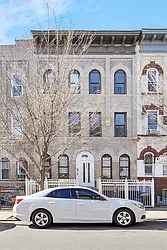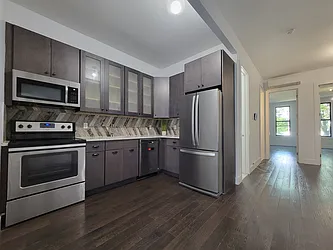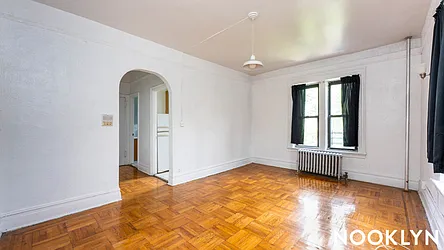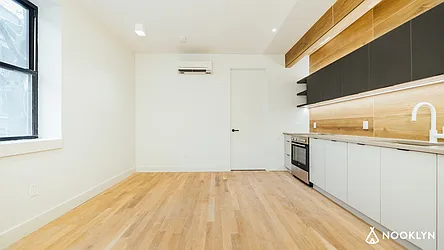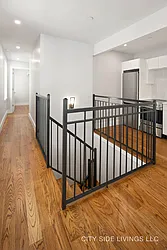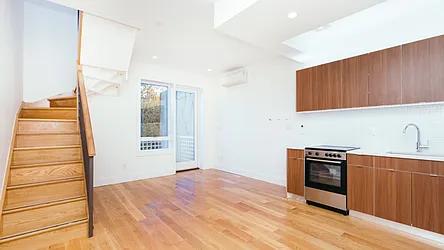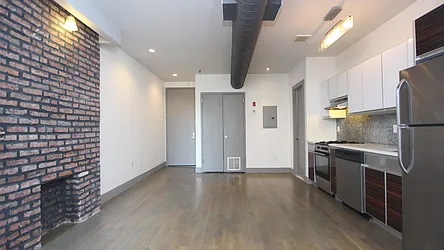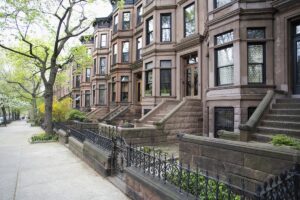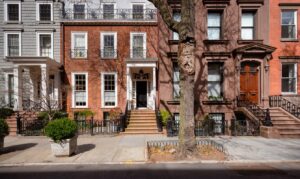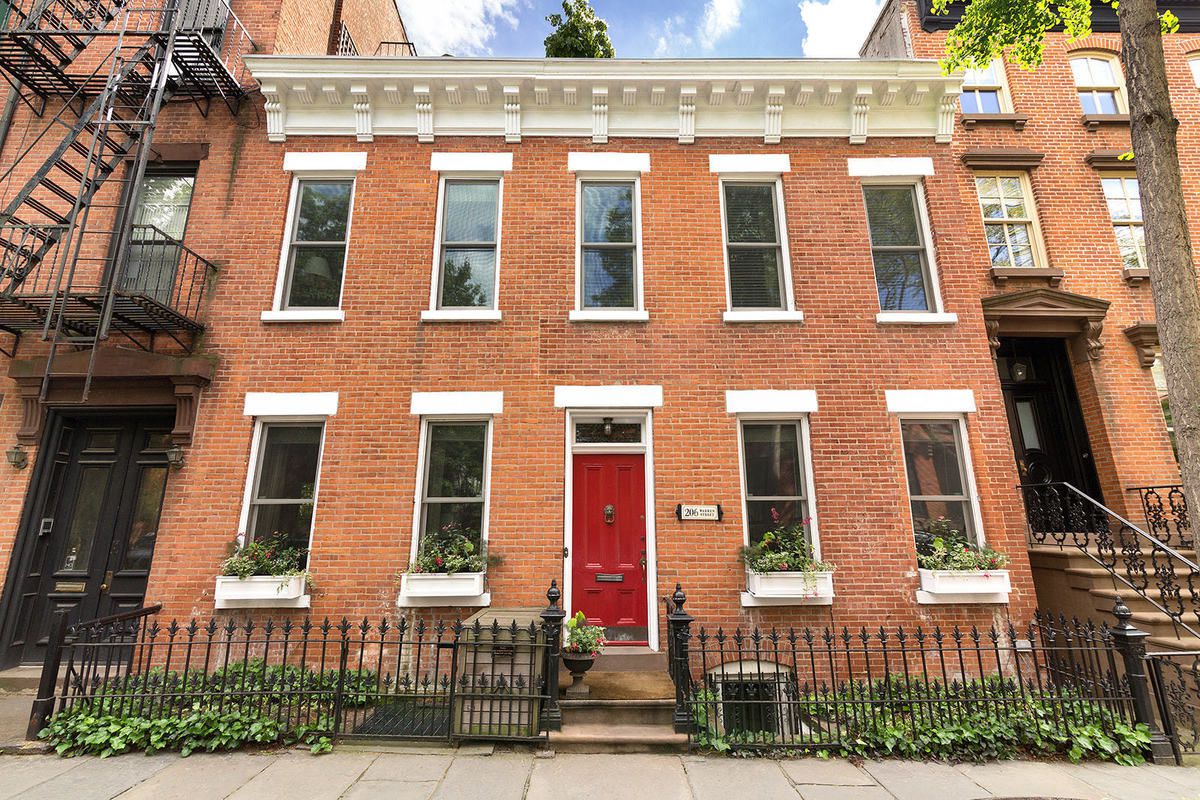
This carriage house at 206 Warren St. in Cobble Hill asks $3.45 million.
While New York’s skyline and towering high-rises are iconic, some of the most coveted properties are much shorter. Carriage houses go on the market rarely and make an impression when they do. These squat abodes are usually two or three floors tall and are most often single-family homes. And they go for quite a premium — often in the millions. But if you’re wondering what a carriage house is, you’ve come to the right place.
What Were These Houses Used For?
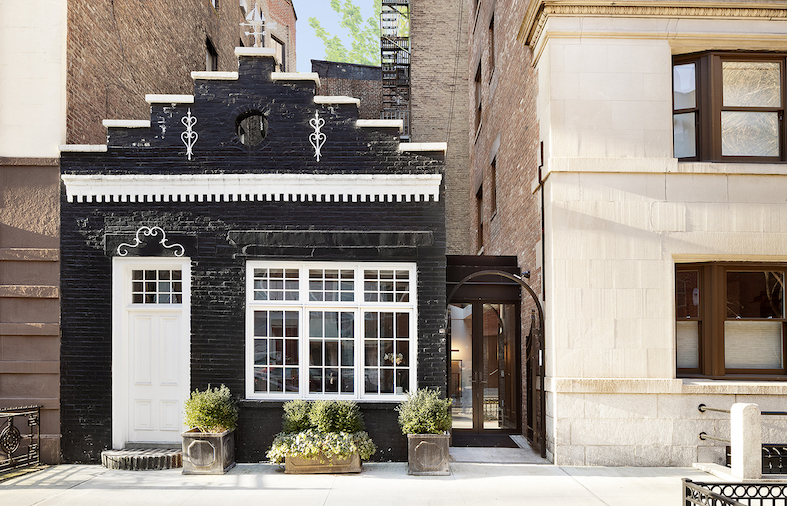
It may seem tiny, but surprise! This Gramercy Park carriage house connects to a ginormous interior. Take a peek.
In the 1800s, carriage houses began popping up as a means to store wagons, buggies, and horses. They were essentially the 19th century equivalent of a modern-day garage. Later in the 1900s, those who could afford the latest mode of transportation, the motor wagon, begin using their carriage houses to store their new vehicles. As time marched on, carriage houses evolved into artists’ studios or lofts. As real state prices climbed to historical rates in NYC, these buildings became highly desirable residential properties.
What Makes NYC Carriage Houses Special?
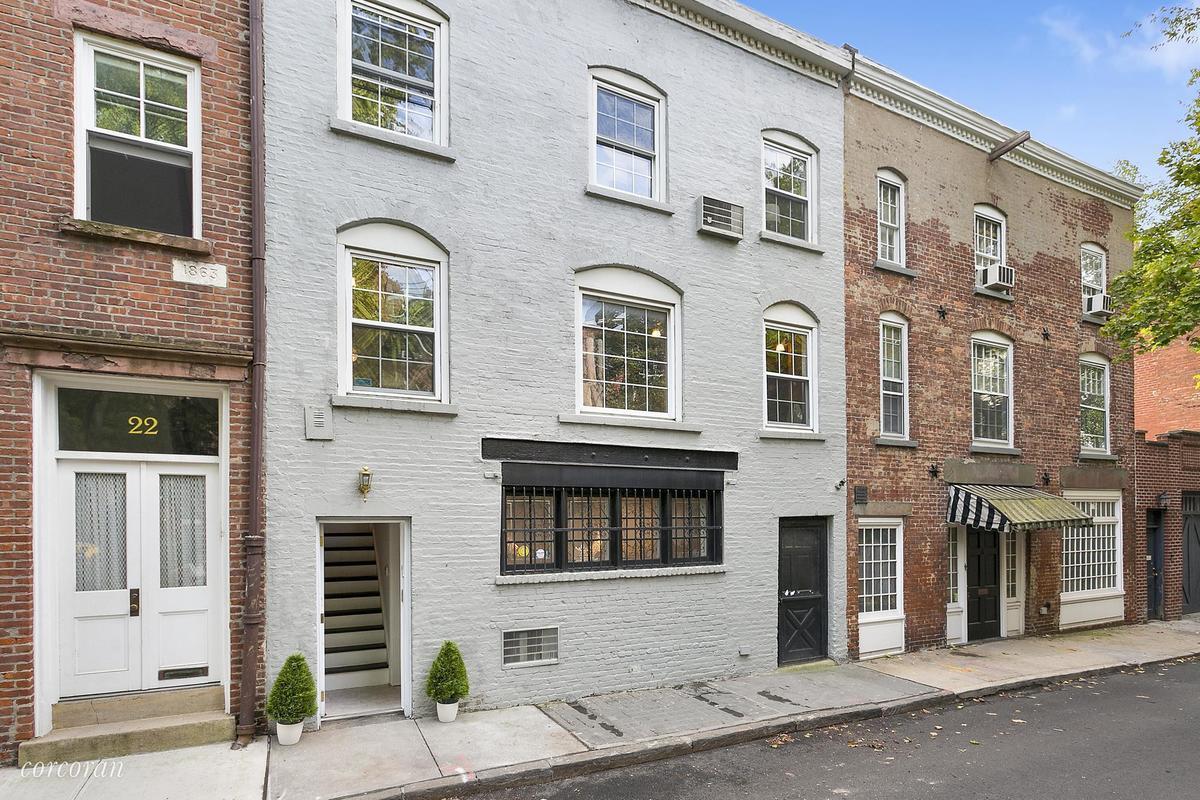
20 Verandah Place in Brooklyn is another charming example.
They definitely stand out on the street due to their short stature. Oftentimes, the highly arched doors, originally meant for the carriage to enter through, are still intact and used as decoration. Other times, the door has been covered up completely. They are usually single-family homes, said Andy Friedman, a broker with Halstead Brooklyn. When you combine a single-family home in an apartment-dominated city with historic charm, you can expect prices to skyrocket.
“They usually sell for a premium because they’re rare and look unique,” Friedman said. “People love them because they’re different.”
How Are They Different Than Townhouses?
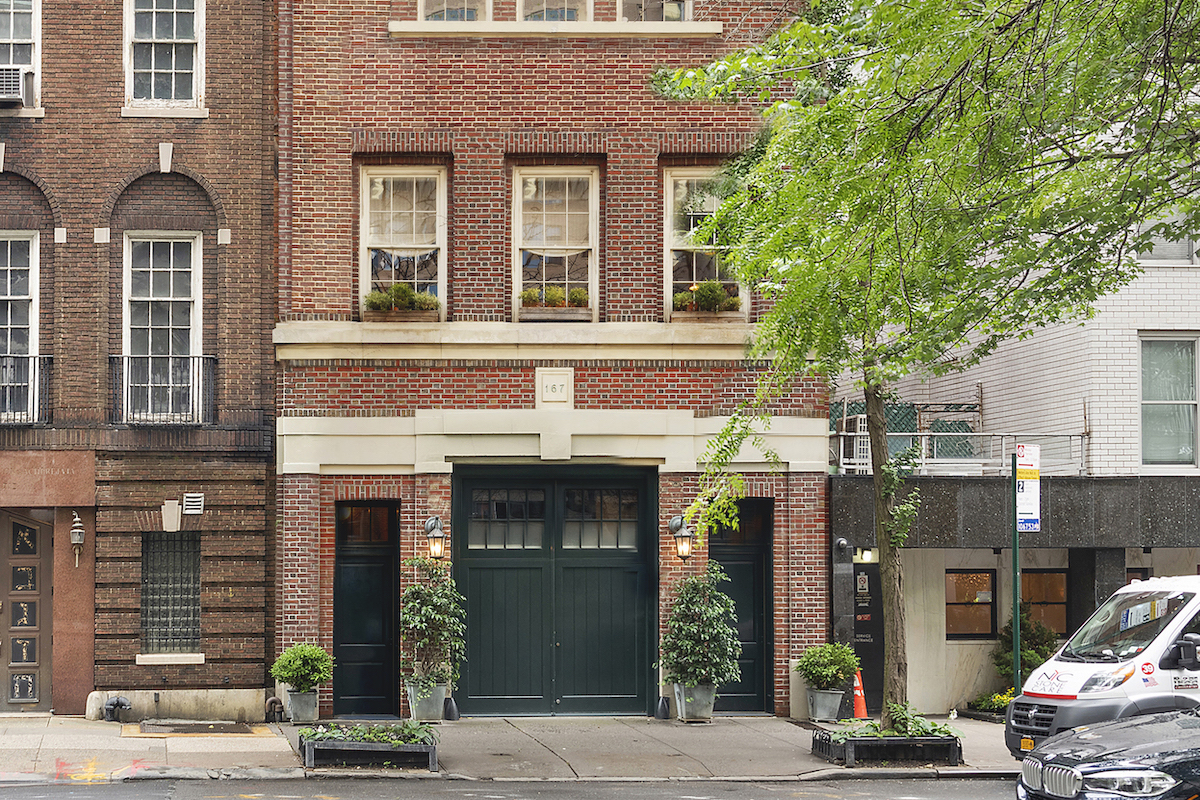
This carriage house at 167 E. 69th St. in Lenox Hill sold earlier this year for $11 million.
Besides being shorter than the average townhouse, carriage houses are also very wide — much wider than the average townhouse. Additionally, the stables had to be tall in order to fit the carriage itself in the space, so ceilings are usually higher than you’d find in a townhouse.
Friedman is currently representing one of these dwellings in Cobble Hill on Verandah Place, which is 28 feet wide and originally had a hayloft. Many stables had a loft for the coach hands to use, and while most of these houses have been renovated and retrofitted, it helps that the structure accounted for multiple levels.
NYC Homes Under 2M on StreetEasy Article continues below
Are These Houses on Their Own Property?
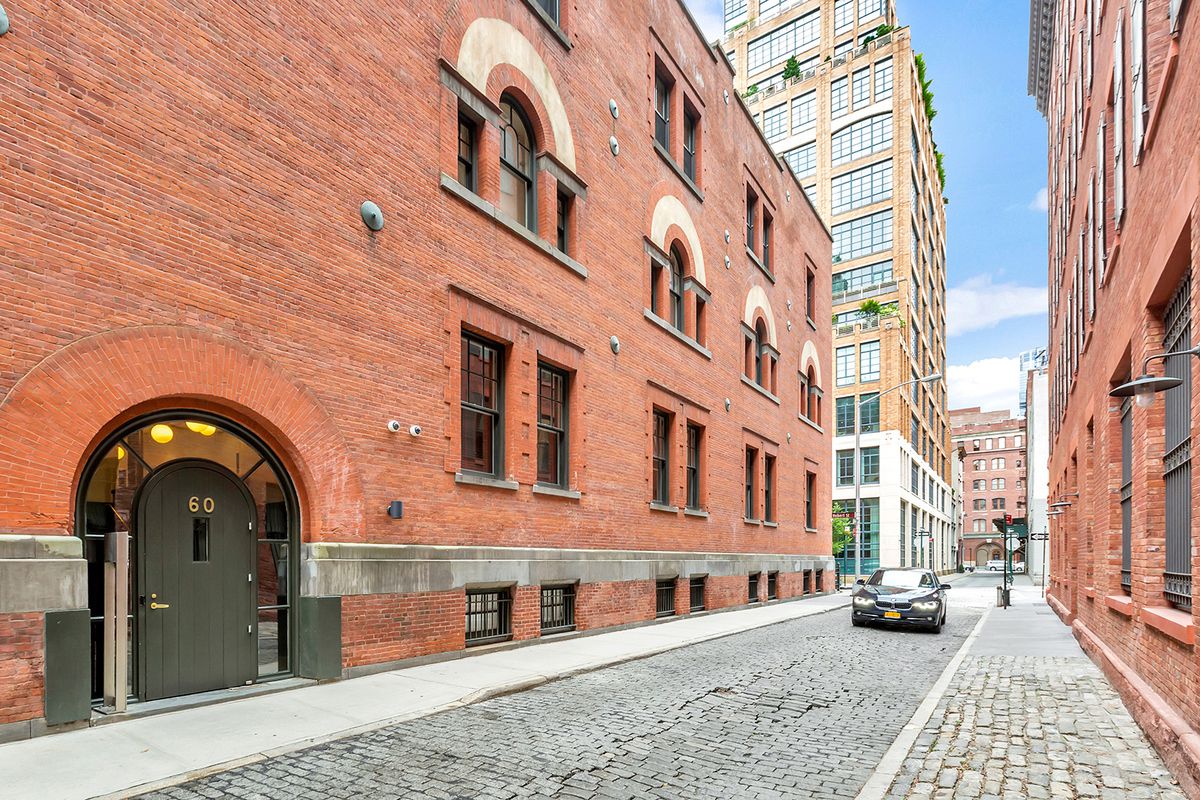
Sixty Collister was once a large horse stable that was later transformed into luxury lofts.
Oftentimes, yes, carriage houses sit on their own lots. However, some carriage houses were built behind townhouses and still remain there to this day, as is the case with 10 Bedford Street shown below. The buildings are a package deal.
Another fun fact, some carriage houses are accessible via their own alley. One, for instance, is 60 Sixty Collister in Tribeca.
How Can I Find One of These Homes in NYC?
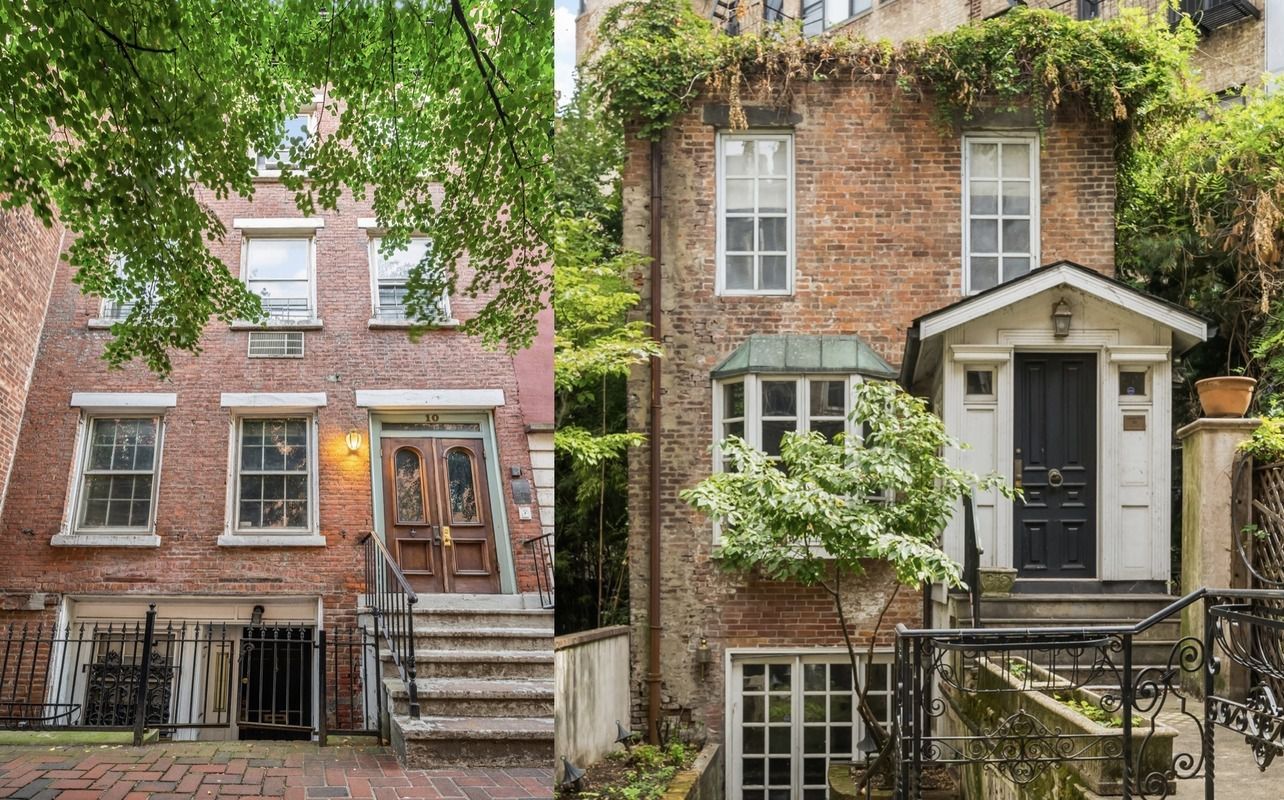
Talk about a win-win. This townhouse at 10 Bedford St. has its own carriage house.
You can search for carriage houses on StreetEasy, but be warned: They are a hot commodity, and inventory is exceptionally low. Neighborhoods known for having carriage houses include Cobble Hill and Clinton Hill in Brooklyn, as well as the West Village and the Upper East Side in Manhattan. However, Friedman said, these houses often stay in families for quite a few years and don’t have much turnover. But that doesn’t mean you should give up hope! Keep your peepers peeled.
—
Whether you’re looking to rent or to buy, find your next NYC apartment on StreetEasy.
Brooklyn Rentals Under $4,000 on StreetEasy Article continues below

